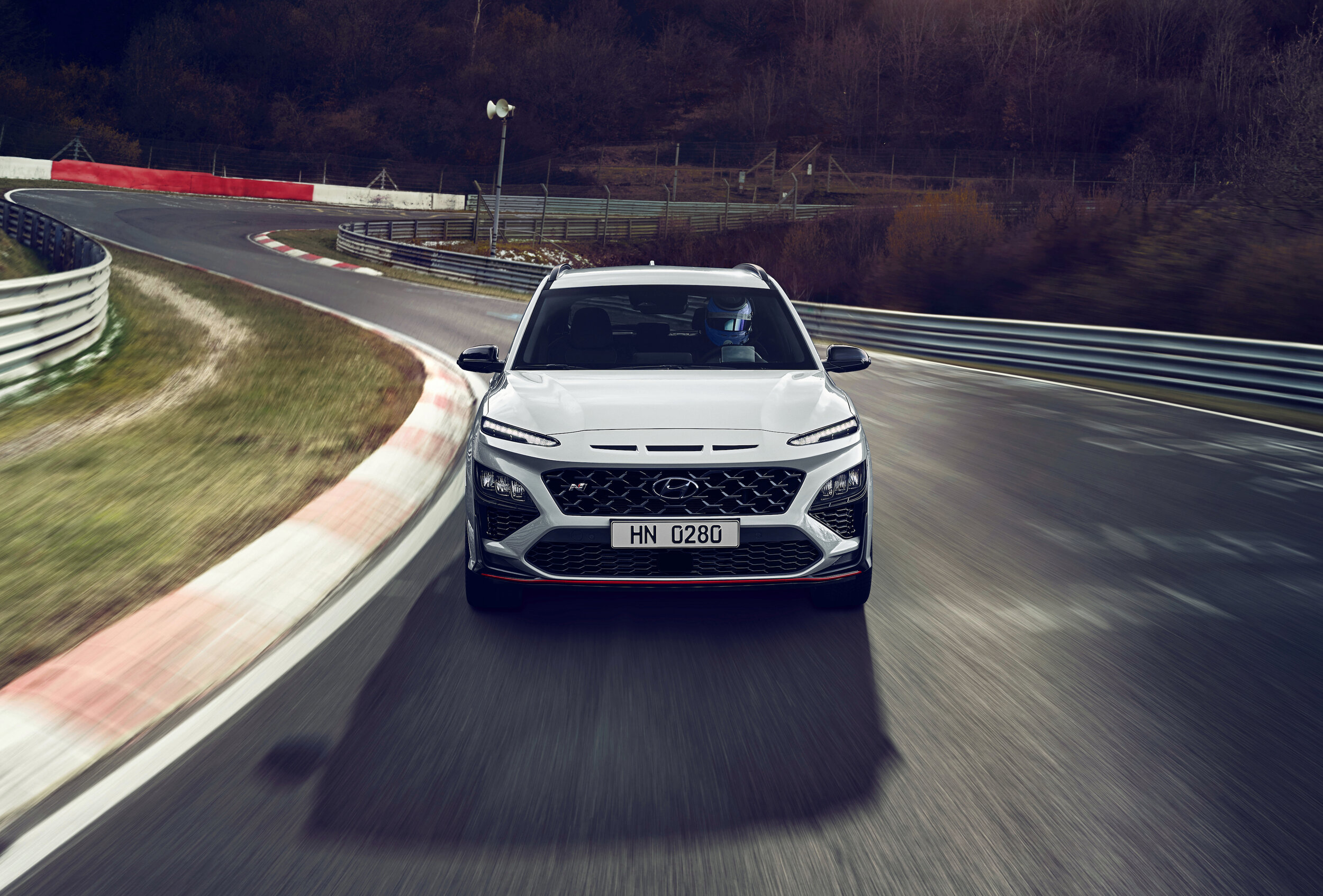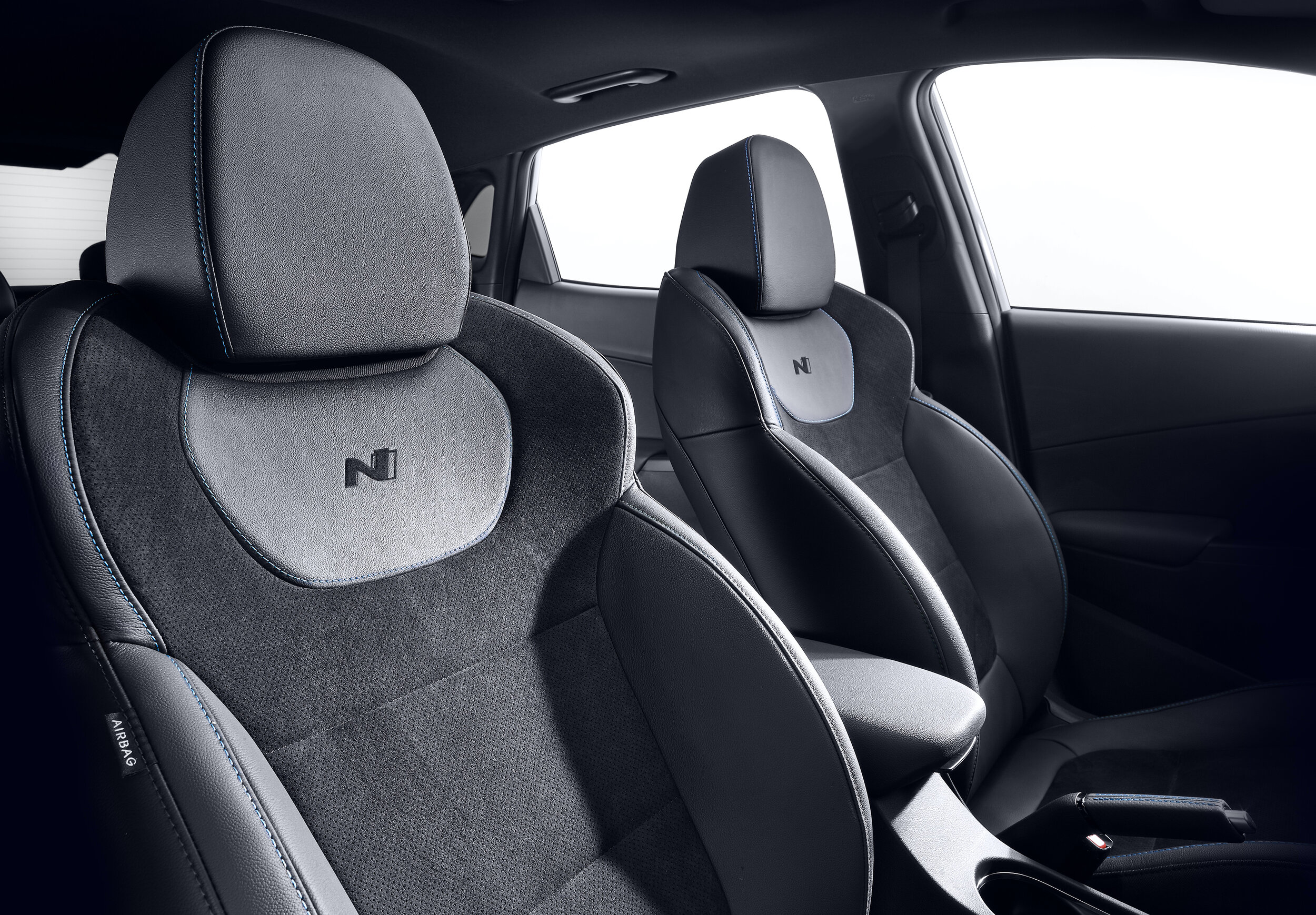Grin and hear it – wild Kona NZ-bound
/N variant delivers with turbocharged 2.0-litre and plenty of circuit-tuned tweaks.
THAT look of excitement you should feel when driving a steroidal performance model?
Hyundai reckons it’s worthy of a special button in its latest N model.
Revealed internationally overnight and set for New Zealand introduction later this year, for an as yet undisclosed price, the high-performance edition of the Kona crossover has many features to distinguish itself from the mainstream models – including what they taken to call the ‘N Grin’ button.
This is one of three specific performance modes that, essentially, unleashes all this baby berserker has got – which, specifically, is just as was rumoured.
The fifth Hyundai to gain the brand’s ultimate performance credential - but just the third for us (it’s joining the i30 hatch and fastback; with the i20 N and Veloster N still absent and unlikely to arrive) – the car has released with the same turbocharged 2.0-litre as features in the i30 N, with an output of 206kW/392Nm in normal mode – and a boost to 213kW for 20 seconds in “grin”.
The Kona runs an eight-speed dual clutch transmission, driving just the front wheels. No all-wheel-drive edition is planned.
This gearbox modes also include N Power Shift, is engaged when accelerator input exceeds 90 percent. It works to mitigate any loss of torque during upshifts to provide a smoother acceleration curve, accompanied by a backfire from the exhaust.
Thereafter there’s ‘N Grin Shift’, which provides a 20-second burst of maximum performance by instantly shifting down to the “most appropriate gear”. Hyundai says this mode (which can only be used every 40 seconds) will be especially useful on a circuit and will help on the road with merging and overtaking.
The third mode is N Track Sense Shift. This is geared towards circuit driving, optimising gearchanges based on driver behaviour for quick lap times.
In terms of straight-line performance, the 1510kg Kona N can accomplish 0-100kmh in 5.5 seconds when its launch control is engaged and reach 240kmh.
The car’s special ingredients include Pirelli P Zero performance tyres wrapped around lightweight 19in forged alloys, significantly uprated brakes front and rear, extra body reinforcements for improved stability in cornering and an electronically controlled limited-slip differential (eLSD), which Hyundai calls the N Corner Carving Differential.
The electrically assisted steering is tuned for accuracy, directness and feedback, while the electronically adjustable suspension can be stiffened at the touch of a button.
The Kona N easily stands out from regular editions through having a prominent aero package, colour-coded bumpers and wide-track wheel designs. It’s available in an exclusive shade of Sonic Blue inspired by the N sub-brand’s trademark Performance Blue, which itself is used for accents throughout the interior.
The interior enhancements are also extensive. Kona N has a bespoke steering wheel, pedals and front seats. The infotainment system has also been modified, with the 10.0in touchscreen and digital display enabling lap times, circuit maps – including the Nurburgring, where it was developed, though whether NZ layouts will be included is not clear - and other important information in a video game-style format.
All Kona N models get launch control and variable exhaust valves as standard,
In announcing the Kona N, Hyundai has also let slip a plan to expand its N and N-Line range to 18 by the end of 2022 and said the long-term plan is for some N cars to be electric. Potentially there’s even a hydrogen supercar en route one day.. Hyundai has been experimenting with a hydrogen-powered supercar since it unveiled a daring concept at the 2015 Frankfurt Motor Show designed for the iconic Gran Turismo game.
Hyundai is one of the few global vehicle manufacturers that produces hydrogen, electric and hybrid cars – in addition to petrol and diesel models. And a supercar isn’t out of the question as it has a close association with Rimac.
“Whether it’s battery electric or fuel cell electric … it shows our readiness to explore new power sources,” Albert Biermann, the head of Hyundai’s N division and former BMW M engineering chief, related to media in an international broadcast.





















